7 clever ways to lighten any recipe
Try these tips to help reduce the amounts of fat, sugar, and calories in your favorite foods—without sacrificing flavor.
Updated on September 7, 2022
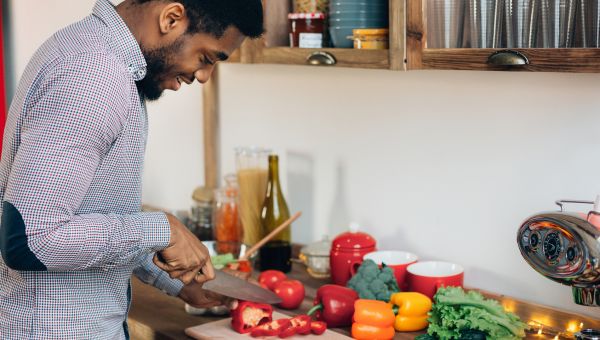
Eating well doesn’t mean you have to forgo your favorite flavors. In fact, there are simple, straightforward ways to enjoy weekly staples while reducing your intake of fat, added sugar, and calories. From the ingredients you buy to the way you prepare them, there are simple ways to lighten even the richest dishes.
Kaitlin Lindsay, RDN, CNSC, a dietitian based in Denver,… Show More
Eating well doesn’t mean you have to forgo your favorite flavors. In fact, there are simple, straightforward ways to enjoy weekly staples while reducing your intake of fat, added sugar, and calories. From the ingredients you buy to the way you prepare them, there are simple ways to lighten even the richest dishes.
Kaitlin Lindsay, RDN, CNSC, a dietitian based in Denver, Colorado, reveals the secrets to creating light, flavorful meals. The first step, she says, is cooking most of your meals at home.
“When you're actually making the food yourself, you're so much more aware of what's going into it,” says Lindsay. “It helps you make better choices.”
Show Less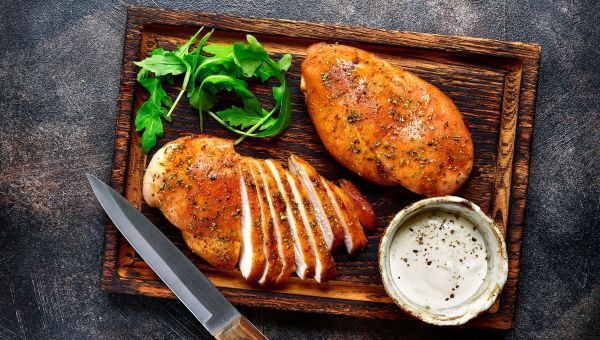
Buy lean
According to the most recent Dietary Guidelines for Americans, lean protein is essential in a healthy diet, as are plenty of fruits, vegetables, whole grains, and healthy fats. Our bodies rely on protein for optimal function. But not all sources are healthy.
Some proteins—like certain cuts of… Show More
According to the most recent Dietary Guidelines for Americans, lean protein is essential in a healthy diet, as are plenty of fruits, vegetables, whole grains, and healthy fats. Our bodies rely on protein for optimal function. But not all sources are healthy.
Some proteins—like certain cuts of beef, pork, and lamb—are loaded with unhealthy saturated fats, which can increase cholesterol levels and raise your risk for heart disease. When shopping for protein, choose lower-fat options, like lean ground turkey, chicken breast, or top sirloin.
The less fatty options are typically lower in calories, too. A 3-ounce serving of lean turkey contains nearly 100 fewer calories and less fat than a similar portion of lamb.
Don’t forget plant-based proteins, like chickpeas and tofu. “Tofu is a great substitute because it takes on the nature of whatever flavors you're cooking it in,” says Lindsay. Tofu contains just 60 calories per 3 ounces; chickpeas have 67 calories per quarter cup. To find the best protein substitutions for any recipe, check out the chef’s notes. If you find the dish online, read reader reviews. These firsthand accounts will frequently offer tips for making even the leanest cut of meat more palatable.
Show Less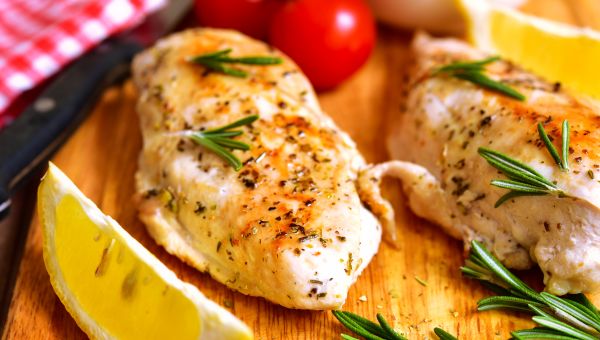
Grill, bake, or sauté
Served by itself, on a hearty sandwich or beside a heaping helping of mashed potatoes, fried chicken is delicious. The problem is that crispy fried chicken—like other fried eats—is typically high in saturated fat and extra calories. One serving of fried chicken breast from a popular restaurant… Show More
Served by itself, on a hearty sandwich or beside a heaping helping of mashed potatoes, fried chicken is delicious. The problem is that crispy fried chicken—like other fried eats—is typically high in saturated fat and extra calories. One serving of fried chicken breast from a popular restaurant chain contains roughly 390 calories and 21 grams of fat.
Lighten the load of this all-American classic—and almost any typically fried meat—by giving it a quick sauté on the stove top instead of dropping it into a deep fryer. And remember to use a light touch with the oil. Although it's made mostly of good fat, a single tablespoon of olive oil contains 120 calories.
If you’re looking to skip the oil altogether, grab your skillet and add low-sodium chicken broth, with just 10 calories per cup. Another light cooking option: Sprinkle your meat with calorie-free herbs and spices and pop it on the grill or in the oven. You can cook your favorite veggies the same way.
Show Less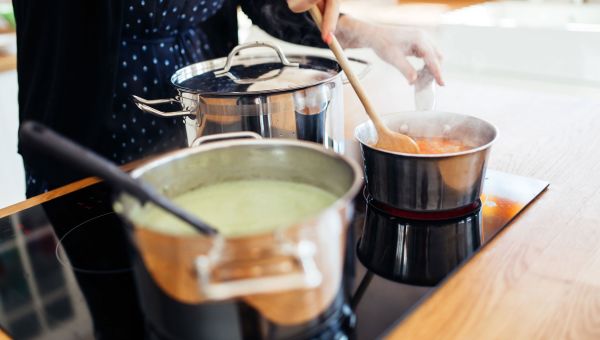
Cut the cream
Many soups, stews, and pasta sauces are made with heavy cream, which contains 821 calories and 88 grams of fat per cup. Fortunately, loading your pot with cream isn’t the only way to thicken your dish.
Some cooks substitute pureed tofu for heavy cream, which reduces fat and calories. Others thicken… Show More
Many soups, stews, and pasta sauces are made with heavy cream, which contains 821 calories and 88 grams of fat per cup. Fortunately, loading your pot with cream isn’t the only way to thicken your dish.
Some cooks substitute pureed tofu for heavy cream, which reduces fat and calories. Others thicken dishes with a little flour or cornstarch. Another surefire way to thicken your soups and sauces—and add a dose of vitamins and minerals—is to mix in pureed veggies. A large head of cauliflower contains just 210 calories and less than 1 gram of fat. So roast it, blend it up, and pour it in. Potato puree will also do the trick. One large spud contains 278 calories and less than 1 gram of fat.
In some veggie-based dishes, like butternut squash soup, you can ditch the cream entirely. Check out vegetarian- and vegan-friendly blogs for a multitude of delicious veggie purees, plus more swaps for heavy cream.
Show Less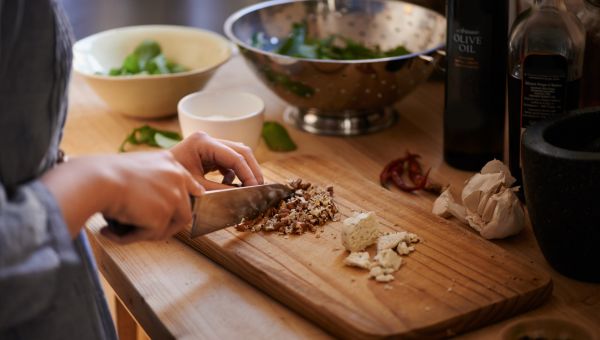
Give your ingredients a good chop
If you add healthy toppings like avocado, nuts, and unsweetened dried fruit to your lunchtime salads and evening dinner plate, you might be taking in more calories than you think. For example, four walnuts contain about 105 calories. Small servings of dried cranberries and creamy avocado are high… Show More
If you add healthy toppings like avocado, nuts, and unsweetened dried fruit to your lunchtime salads and evening dinner plate, you might be taking in more calories than you think. For example, four walnuts contain about 105 calories. Small servings of dried cranberries and creamy avocado are high in calories, too.
You can still add these extras. Just give them a chop so you get a little in every bite of salad. The finer your chop them, the better they’ll be distributed throughout your dish, so you can ultimately use less without sacrificing flavor and texture. A little goes a long way.
Show Less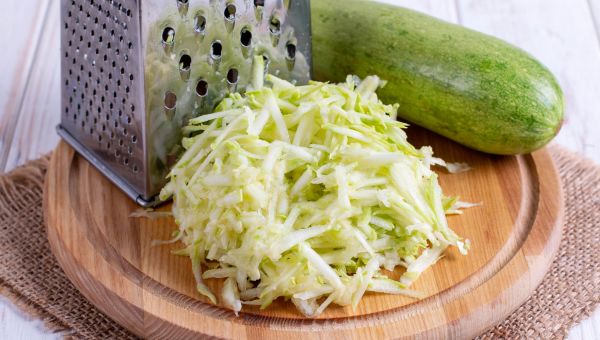
Load in the veggies
Veggies are staples of any healthy diet. In fact, Lindsay suggests eating more non-starchy, nutrient-rich produce than any other food.
“Think about how your plate is divided up,” she says. “The biggest section should be vegetables, which can take up half of your plate.” She recommends rounding out… Show More
Veggies are staples of any healthy diet. In fact, Lindsay suggests eating more non-starchy, nutrient-rich produce than any other food.
“Think about how your plate is divided up,” she says. “The biggest section should be vegetables, which can take up half of your plate.” She recommends rounding out your meal with a serving of healthy carbs, lean protein, and heart-healthy fats, like avocado or olive oil.
You can lighten up almost any meal by tossing in your favorite mixed veggies. Grate zucchini into your turkey burgers or meatloaf for added vitamin A and potassium in every bite. Vitamin A is good for the health of your bones and white blood cells and potassium promotes healthy blood pressure levels.
You can also enjoy the flavor of your favorite rice dish without the high-carb price tag. Swap riced cauliflower in for your usual white or brown rice. (To make cauliflower rice, simply cut the veggie into chunks and run it through a food processor for a few pulses until it resembles rice, then cook as directed.) This simple substitution will save you nearly 200 calories per cup.
Show Less
Skip store-bought sauces
Even otherwise healthy dishes can become high in calories if they're loaded with sauces. Many store-bought dressings are high in fat, calories, sodium, and added sugars. Lessen the load by whipping up your own dressings and marinades. It’s much simpler than you think.
“It's so easy to make a… Show More
Even otherwise healthy dishes can become high in calories if they're loaded with sauces. Many store-bought dressings are high in fat, calories, sodium, and added sugars. Lessen the load by whipping up your own dressings and marinades. It’s much simpler than you think.
“It's so easy to make a homemade salad dressing with some vinegar or lemon juice and some kind of oil,” says Lindsay. Give some exotic flavors like grapeseed or avocado oil a try, or stick with an old favorite like olive oil. You can marinate your favorite meats and veggies in this mix, too.
A teaspoon of olive oil plus 1/2 tablespoon of apple cider vinegar contains fewer than 45 calories. In comparison, a serving of store-bought Italian vinaigrette may contain as many as 130 calories, plus sodium, sugar, and other additives.
Show Less
Opt for egg whites
Eggs are a quick and healthy source of protein, but their bright yellow centers—though rich in iron, vitamins, and antioxidants—contain all of the food’s dietary cholesterol. If you’re concerned about this, just use the whites.
Looking to make the swap in your next casserole, soup, cookie, or… Show More
Eggs are a quick and healthy source of protein, but their bright yellow centers—though rich in iron, vitamins, and antioxidants—contain all of the food’s dietary cholesterol. If you’re concerned about this, just use the whites.
Looking to make the swap in your next casserole, soup, cookie, or brownie recipe? Replace one whole egg with two egg whites or 1/4 cup of egg substitute. If you still like the flavor of the yolk, mix two egg whites with one whole egg, instead of two whole eggs.
Show Less
USDA. Dietary Guidelines for Americans, 2020-2025. Accessed Jan. 20, 2021.
More On


video

article

slideshow


video


video
